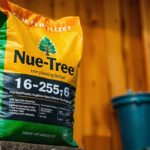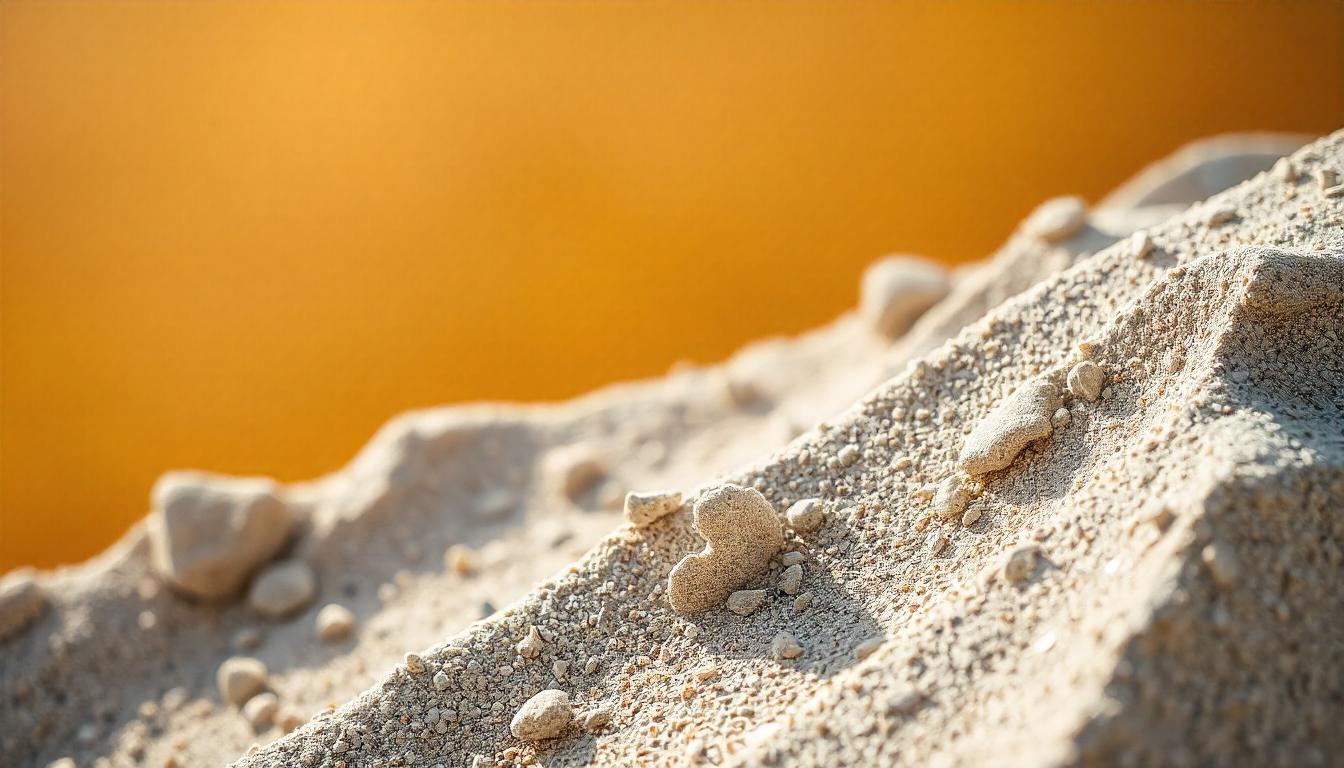Concrete sand is a fundamental material in the construction industry, providing essential structure and strength to buildings, roads, and infrastructure projects. With its durability and binding properties, concrete sand helps form robust concrete mixes, making it ideal for residential and commercial construction. Sand in concrete works as a fine aggregate, helping to fill voids between larger aggregate particles and enhancing the density of the concrete.
Understanding the types, properties, and specific uses of concrete sand can help builders and DIY enthusiasts select the right material for their project needs. Let’s explore the characteristics, applications, and importance of concrete sand in construction.
What is Concrete Sand?
Concrete sand is a coarse, sharp sand with granules sized specifically to suit concrete mixtures. Unlike finer sands, concrete sand has larger grains, making it ideal for structural applications that require strength and stability. Its composition is typically a mix of crushed rocks and mineral fragments, chosen to bind well with cement and improve the quality of concrete. The rough texture of concrete sand is critical for holding the mix together and preventing cracking or shifting over time.
Compared to other sands, concrete sand has a larger particle size and is carefully processed to remove impurities that could interfere with concrete bonding. This makes it distinct from masonry sand or beach sand, which have different compositions and uses.
Types of Sand Used in Construction
Construction projects use various types of sand, each with distinct properties suited for specific tasks:
- Concrete Sand: The preferred sand for concrete mixtures, offering good durability and structure.
- Masonry Sand: Fine-grained and often used for mortar mixes, bricklaying, and other masonry work.
- River Sand: Known for its smooth texture, ideal for plastering, but less effective in structural mixes.
- Manufactured Sand (M-Sand): An artificial alternative created by crushing rocks; popular in areas where natural sand is scarce.
- Crushed Stone Sand: Made by crushing stone, offering strength and structural reliability for heavy-duty concrete.
Each sand type varies in texture, particle size, and binding ability, making it essential to select the right one for specific construction needs.
Concrete Sand vs. Masonry Sand
Though both concrete and masonry sand play roles in construction, they differ significantly in properties and applications. Concrete sand is coarser, with larger grains designed for strong concrete mixes. In contrast, masonry sand is finer and smoother, suitable for mortar and thin-set applications that don’t require the same strength as concrete.
Here’s a comparison of concrete sand and masonry sand presented in a table format:
| Feature | Concrete Sand | Masonry Sand |
|---|---|---|
| Grain Size | Coarse and angular | Fine and uniform |
| Texture | Rough | Smooth and rounded |
| Primary Use | Mixing with concrete for structural applications | Mixing with mortar for masonry work |
| Strength | Enhances strength and durability of concrete | Provides good adhesion in mortar |
| Drainage | Excellent drainage properties | Limited drainage |
| Aesthetic Finish | Typically not used for visible finishes | Ideal for achieving a smooth, aesthetic finish |
| Source | Typically crushed stone or gravel | Sourced from riverbeds or quarries |
| Production Method | Produced to ensure rough texture for bonding | Natural grains, resulting in rounded particles |
This table highlights the key differences between concrete sand and masonry sand, helping you choose the right type for your project.
How is Concrete Sand Made?
Concrete sand is typically produced through a process that involves crushing rocks, followed by washing and screening to achieve a specific particle size. This manufacturing process ensures the sand is free from impurities like clay, silt, or organic matter that might compromise the quality of concrete. The sand goes through grading and testing to meet industry standards, ensuring that it meets the right size and consistency for concrete applications.
Quality control in the production process is crucial, as the performance of concrete sand directly impacts the strength, durability, and longevity of the concrete structure. Producers often follow standards like ASTM (American Society for Testing and Materials) to ensure consistent quality.
Properties of Concrete Sand
Concrete sand has several unique properties that make it ideal for concrete mixes:
- Grain Size and Texture: Coarse and rough, ensuring a strong bond with cement.
- Durability: Concrete sand’s composition contributes to long-lasting concrete structures.
- Drainage: Its granular texture allows for good drainage, making it suitable for applications where water runoff is essential.
The combination of these characteristics makes concrete sand indispensable for projects requiring strength and longevity, such as foundations, driveways, and structural walls.
Benefits of Using Concrete Sand in Construction
Concrete sand offers multiple benefits in construction, including:
- Enhanced Strength and Durability: Concrete sand’s rough texture provides a strong foundation, minimizing the risk of shifting or cracking over time.
- Improved Workability: With the correct concrete sand, mixtures become easier to work with, allowing smoother finishes.
- Cost-Effectiveness: Concrete sand is widely available and relatively affordable compared to other aggregates, making it a budget-friendly choice for large-scale construction.
These advantages make concrete sand a preferred material for construction teams focused on delivering reliable and lasting structures.
Applications of Concrete Sand
Concrete sand’s versatility extends across several applications:
- Concrete Mixes: Essential in forming strong, durable concrete for foundations, walls, and roads.
- Asphalt Production: Used in asphalt mixes for paving projects due to its durability and stability.
- Landscaping: Concrete sand is useful in landscaping for stabilizing pavers and creating pathways.
- Pipe Bedding and Utility Installation: Provides support and drainage for utility pipes, minimizing soil erosion around the installations.
From urban infrastructure to residential projects, concrete sand is integral to achieving high-quality results in a wide range of construction tasks.
Mixing Ratios for Concrete Sand in Concrete
When mixing concrete, the proportions of sand, cement, and aggregate are crucial for achieving the desired strength and durability. Here’s a general guideline for mixing ratios, including the role of sand:
Common Concrete Mixing Ratios
- Standard Mix (1:2:4)
- Cement: 1 part
- Sand: 2 parts
- Aggregate: 4 parts
- Water: Generally 0.5 parts (can vary based on moisture content in sand and aggregates)
- Rich Mix (1:1.5:3)
- Cement: 1 part
- Sand: 1.5 parts
- Aggregate: 3 parts
- Water: Approximately 0.5 parts
- Lean Mix (1:3:6)
- Cement: 1 part
- Sand: 3 parts
- Aggregate: 6 parts
- Water: Approximately 0.5 parts
How to Choose the Right Sand for Your Project
When choosing the right sand for your project, consider the following key points:
- Type of Sand: Opt for concrete sand for mixing with concrete due to its coarse and angular nature, while mason sand is better for mortar and finishing work. For filling and base layers, fill sand is appropriate.
- Purity and Cleanliness: Ensure the sand is free from contaminants like clay and organic materials, as these can weaken the mixture. Conduct simple tests to check for impurities.
- Grain Size: Select well-graded sand that contains a mix of particle sizes for improved workability and strength. Coarse sands enhance drainage, while finer sands provide a smoother finish.
- Moisture Content: Be aware of the sand’s moisture level, as wet sand can affect the water-to-cement ratio in your mix. Adjust your water content accordingly.
- Source and Availability: Choose local suppliers to reduce transportation costs and environmental impact, and ensure that they have a reputation for quality materials.
- Environmental Considerations: Look for sustainable options, such as recycled or manufactured sand, and be mindful of local regulations regarding sand extraction.
- Specific Project Requirements: Tailor your choice based on the structural needs of your project and the desired aesthetic finish, ensuring that the selected sand meets all necessary criteria for performance and appearance.
Conclusion
Concrete sand is a vital component in construction, ensuring the stability, durability, and longevity of structures ranging from buildings to roads. Its coarse, durable texture is specifically engineered to bind with cement, creating a strong, resilient material capable of withstanding heavy loads and environmental stressors. As the demand for sustainable building materials grows, the construction industry is exploring eco-friendly alternatives to natural sand, including manufactured sand and recycled aggregates, to reduce the environmental impact of sand mining. By choosing quality concreteSand and adhering to proper mixing ratios, builders can achieve optimal results in strength and durability. Ultimately, concrete sand’s versatility, affordability, and structural benefits make it indispensable for modern construction.
FAQs
1. What is the main difference between concrete sand and regular sand?
Concrete sand is coarser and more angular than regular sand, making it ideal for construction projects that require a strong bond with cement. Regular sands, like beach sand or river sand, are finer and smoother, which can affect the strength of concrete.
2. Can I use concreteSand for landscaping?
Yes, concreteSand is excellent for various landscaping projects, especially when creating paver foundations or pathways. Its coarse texture helps stabilize pavers and allows for good drainage, reducing issues like shifting or pooling water.
3. Is concreteSand environmentally friendly?
The extraction of natural sand can have environmental impacts, but many suppliers are shifting to more sustainable practices, including the use of manufactured sand (M-sand). M-sand is produced from crushed rocks and provides a sustainable alternative that reduces the depletion of natural sand resources.
4. How much concretSand do I need for a typical concrete mix?
The amount of concreteSand needed varies depending on the concrete mix. For standard concrete, the common ratio is 1 part cement, 2 parts sand, and 4 parts aggregate. However, the specific amount can vary based on project requirements and concrete grade.
5. What quality standards should concreteSand meet?
ConcreteSand should meet ASTM C33 or ISO standards, which outline size, grading, and cleanliness specifications. Ensuring that concreteSand adheres to these standards guarantees its suitability for concrete mixes, enhancing durability and strength.










